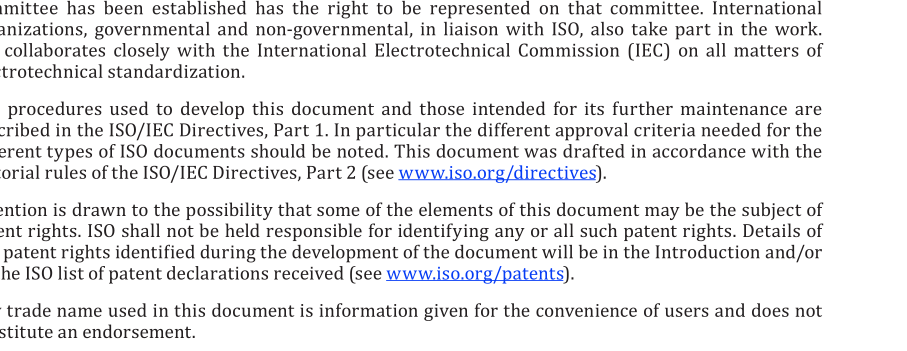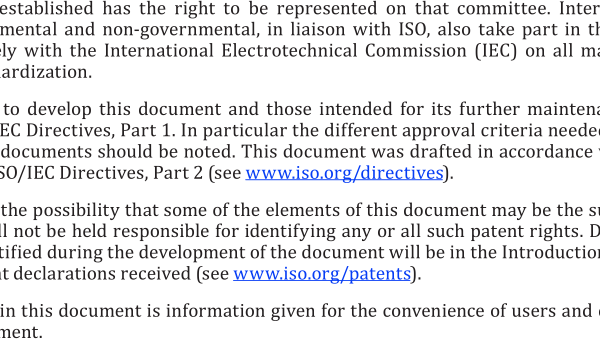ISO TS 21357:2022 pdf download – Nanotechnologies — Evaluation of the mean size of nano-objects in liquid dispersions by static multiple light scattering (SMLS).
1 Scope This document provides guidance and requirements for the determination of the mean (spherical) equivalent diameter of nano-objects (i.e. particles, droplets or bubbles) dispersed in liquids using the static multiple light scattering (SMLS) technique. The technique is applicable to a wide range of materials and does not require dilution of concentrated samples. 2 Normative references The following documents are referred to in the text in such a way that some or all of their content constitutes requirements of this document. For dated references, only the edition cited applies. For undated references, the latest edition of the referenced document (including any amendments) applies. ISO/TS 80004-1, Nanotechnologies — Vocabulary — Part 1: Core terms ISO/TS 80004-2, Nanotechnologies — Vocabulary — Part 2: Nano-objects ISO/TS 80004-4, Nanotechnologies — Vocabulary — Part 4: Nanostructured materials ISO/TS 80004-6, Nanotechnologies — Vocabulary — Part 6: Nano-object characterization 3? Terms? and? definitions For the purposes of this document, the terms and definitions given in ISO/TS 80004-1, ISO/TS 80004-2, ISO/TS 80004-4, ISO/TS 80004-6 and the following apply. ISO and IEC maintain terminology databases for use in standardization at the following addresses: — ISO Online browsing platform: available at https:// www .iso .org/ obp — IEC Electropedia: available at https:// www .electropedia .org/ 3.1 static multiple light scattering SMLS technique in which transmitted or backscattered light intensity is measured after multiple successive scattering events of incident light in a random scattering medium 3.2 transport mean free path average distance that a photon travels before its direction vector in its initial direction of motion is reduced to 1/e of its initial magnitude by elastic scattering alone [SOURCE: ISO 18115-1:2013, 4.299, modified — “an energetic particle” has been changed to “a photon”; “momentum” has been changed to “direction vector”; “initial value” has been changed to “initial magnitude”; notes to entry have been deleted.]
5 Principles 5.1 Relevant theory The SMLS technique is based on the principle of elastic light scattering from dispersed objects in a liquid. Incident light is scattered multiple times successively, which results in a loss of correlation of the incident light direction. The I BS or I T light depends on the incident light wavelength, particle concentration, particle size and shape, optical properties (n and absorption of both the continuous and dispersed phases), and the measurement geometry.
5.2 Key measurands The measurand used in SMLS is a volume weighted mean equivalent (spherical) particle diameter. For a polydisperse suspension case, an effective l * is defined that takes into account contributions to the signal from individual particles of various sizes (as described in 5.1). The diameter corresponding to the effective l * is called the mean equivalent (spherical) particle diameter, also see Formula (2). It can be shown that for particles smaller than the wavelength of light, the measured mean equivalent particle diameter linearly correlates with the mean volume diameter, D [10],[11] . In this case, backscattered light intensity scales approximately as D 3 , meaning that “larger” (but still smaller than λ ) particles contribute more to the signal.
ISO TS 21357:2022 pdf download – Nanotechnologies — Evaluation of the mean size of nano-objects in liquid dispersions by static multiple light scattering (SMLS)






